Posted Jun 6, 2022 by Martin Armstrong
The American view during the 70s was more concerned about gold rather than the value of the dollar against world currencies. Most Americans never traveled to Europe so their impression of currencies was the Canadian dollar which was about par with the dollar that Americans would encounter when visiting Niagra Falls. I remember as a kid the family would drive up there and we would cross the border for the best view from the Canadian side. That was probably my first experience with a foreign currency other than ancient Roman coins when I bought my first one for $10 when I was probably 10 years old.
The other hot spot outside the United States was crossing the border to visit Tijuana in Mexico. That was a real hot spot largely promoted due to the Prohibition Days during the Roaring 20s. The Mexican peso was just this cheap thing that nobody really understood and they never understood how to count their change.
It was Roosevelt who confiscated gold from the banks and created a two-tier system whereby gold was used for international transactions, but silver was used for domestic currency backing until Kennedy ended the silver standard in 1965. Because gold was illegal to own except in coins dated 1947 or before, Americans really had little exposure to foreign currencies. They did not see the foreign exchange rate of the dollar during the 70s and 80s, it was all about gold. I even had a conversation with Paul Volcker who was focused not on the inflation rate as much as he too was obsessed with the rise in the price of gold from $35 in 1971 to $875 on January 21st, 1980 which he saw as the real inflation measurement.
As for the Europeans, they were focused on the dollar and the collapse of Bretton Woods. They were all buying gold after March 1968 when the first crack in Bretton Woods took place allowing a parallel free market in gold in Europe. That was the birth of a two-tier monetary system. Overall, the Europeans were pushing the price of gold up in terms of dollars.
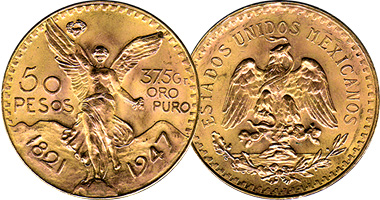 It was a wild time during the 70s. Because I was in New Jersey, the three major gold refineries were there. I was dealing with Englehard which ended up being Phibro post-1975 which took over Solomon Brothers. Before 1975, Americans could buy gold in coin form as long as it bore a date of 1947 and before. Austria, Hungary, and Mexico were the big sellers of gold. They were restricting coins with old dates so Americans could buy gold before 1975.
It was a wild time during the 70s. Because I was in New Jersey, the three major gold refineries were there. I was dealing with Englehard which ended up being Phibro post-1975 which took over Solomon Brothers. Before 1975, Americans could buy gold in coin form as long as it bore a date of 1947 and before. Austria, Hungary, and Mexico were the big sellers of gold. They were restricting coins with old dates so Americans could buy gold before 1975.
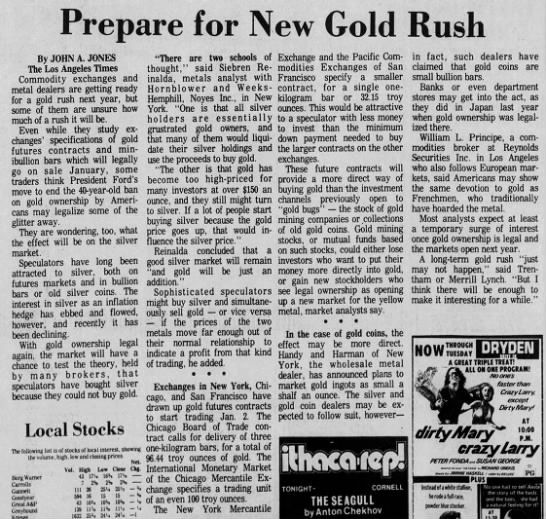 So I was in the thick of things back then insofar as trading was concerned. I had European clients in Gold and I dealt with all the Swiss banks at the time. By sheer fate, being a market maker in gold, taught me a lot. Gold was the first financial instrument for futures trading beyond currencies. The US bonds began trading in 1977 and S&P500 futures came in during 1985.
So I was in the thick of things back then insofar as trading was concerned. I had European clients in Gold and I dealt with all the Swiss banks at the time. By sheer fate, being a market maker in gold, taught me a lot. Gold was the first financial instrument for futures trading beyond currencies. The US bonds began trading in 1977 and S&P500 futures came in during 1985.
Gold rallied into 1974 on ANTICIPATION of Americans were going to run out and buy gold. They were expecting a gold rush. Being in the business, I never got one phone call about buying gold because it would be legal. Everyone who believed in gold had been buying gold coins all along.
The talk of the town was that gold would go to $500 as soon as the Americans were allowed to buy on January 1st, 1975. I sold gold short at the top mainly on a fundamental basis. I did not see any new demand. My Economic Confidence Model said it was a high. But I traded based on my observations.
I watched gold collapse back down to about $100 going into 1976. This is when after watching the ECM for 6 years, I went with it. I opened a new store in the Quakerbride mall and I signed a 10-year lease with a personal guarantee and I got them to eliminate the CPI clause. After all, the talk then was about another depression.
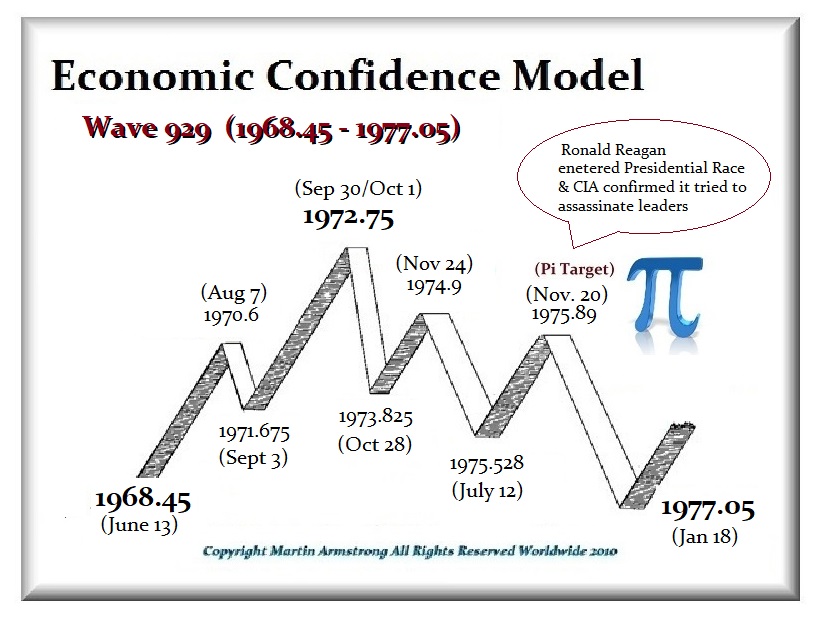 I watched 1968 was the first crack in Bretton Woods and the birth of the two-tier monetary system. The Organization of the Petroleum Exporting Countries (OPEC) oil embargo was a decision to stop exporting oil to the United States. Then-president Richard Nixon appeared particularly concerned that Arab nations might impose a selective embargo on the United States for its pro-Israel policy. He was correct. Oct. 19, 1973, was the official start of the embargo when the Middle East countries announced a 5% production cut per month in response to the Yom Kippur war between Egypt and Israel. They saw Israel’s victory in that war, was because of aid from the United States. The embargoing nations then threatened that the cuts would be restored once Israel withdrew from Palestine and Jerusalem. Obviously, that never happened.
I watched 1968 was the first crack in Bretton Woods and the birth of the two-tier monetary system. The Organization of the Petroleum Exporting Countries (OPEC) oil embargo was a decision to stop exporting oil to the United States. Then-president Richard Nixon appeared particularly concerned that Arab nations might impose a selective embargo on the United States for its pro-Israel policy. He was correct. Oct. 19, 1973, was the official start of the embargo when the Middle East countries announced a 5% production cut per month in response to the Yom Kippur war between Egypt and Israel. They saw Israel’s victory in that war, was because of aid from the United States. The embargoing nations then threatened that the cuts would be restored once Israel withdrew from Palestine and Jerusalem. Obviously, that never happened.
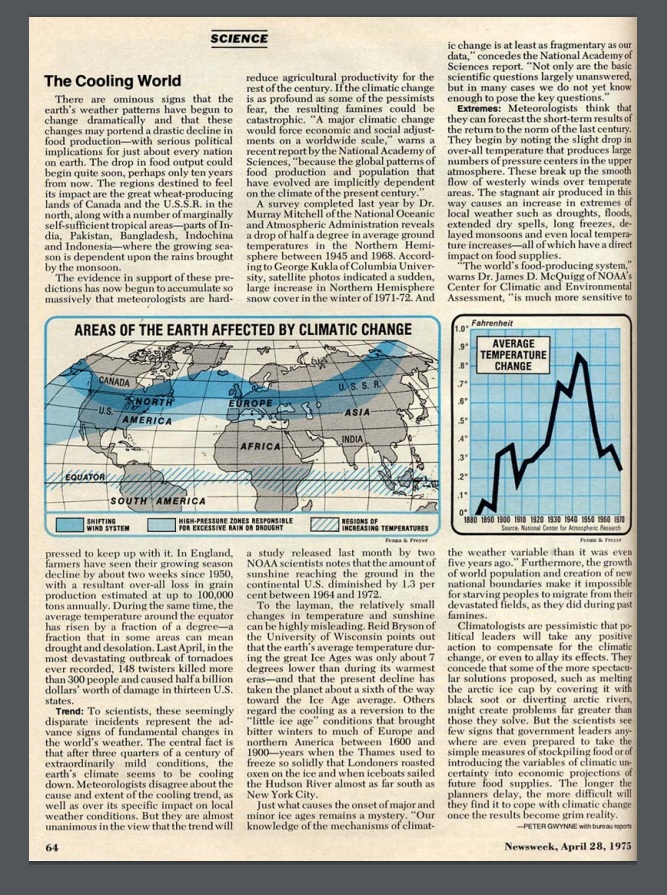 As always, we MUST look at the CONTEXT of the period. First, the climate consensus was that we were heading to a new Ice Age – not global warming. That meant there would be a higher demand for oil to stay warm in winter. In 1971 and 1972, fears began to grow in the developed world that if we were not already running out of energy supplies, we would soon as additional nations adopt western industrial structures.
As always, we MUST look at the CONTEXT of the period. First, the climate consensus was that we were heading to a new Ice Age – not global warming. That meant there would be a higher demand for oil to stay warm in winter. In 1971 and 1972, fears began to grow in the developed world that if we were not already running out of energy supplies, we would soon as additional nations adopt western industrial structures.
Thomas Malthus (1766-1834) warned the population would outgrow the food production so we needed to curtail the growth of the population and advocated deliberately creating a plague among the poor to reduce their number. If you ever really read Malthus, you can see the influence he has still had on people like Bill Gates, George Soros, and Klaus Schwab.
Thus, in 1976 I went with the ECM. That was the wild wave of inflation and the very top of the next wave turned out to be 1981.35 which was the day of the high in interest rates.
What I learned was that none of the fundamentals mattered in the end. Gold would decline with inflation at times and rally at other times. It was more complex than that. The final rally from the $400 level to $875 had nothing to do with inflation, that was the invasion of Russia into Afghanistan.
The reliable was simply the objective analysis.
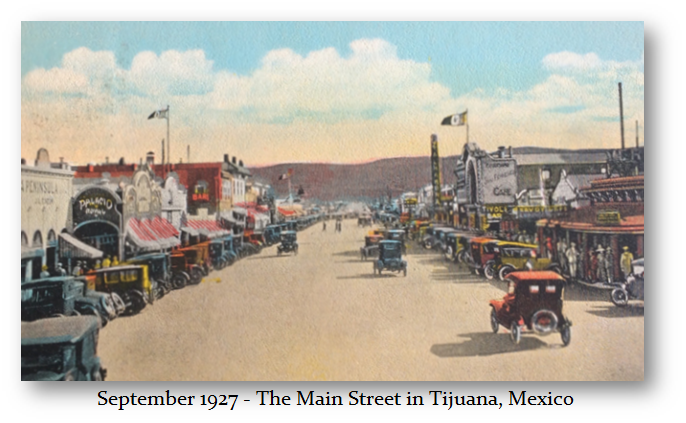
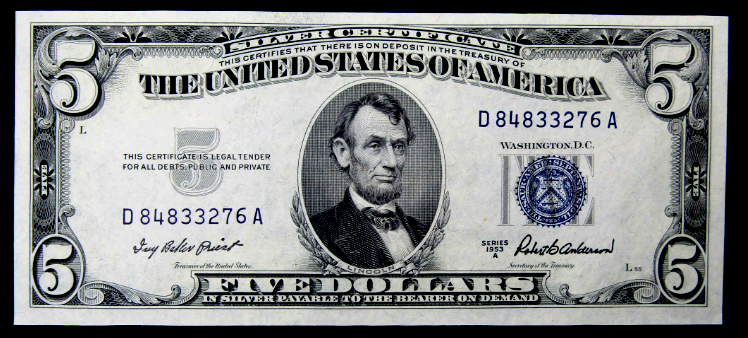
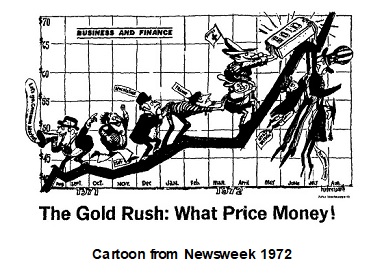
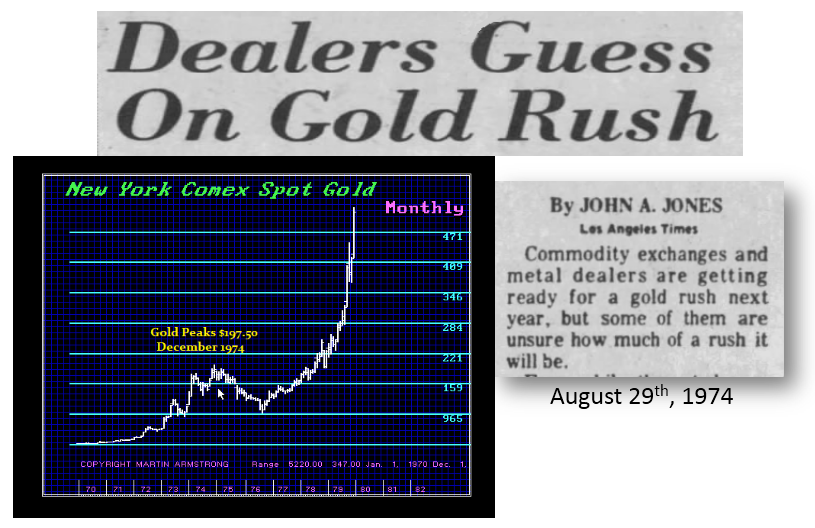
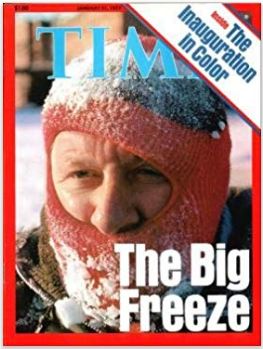
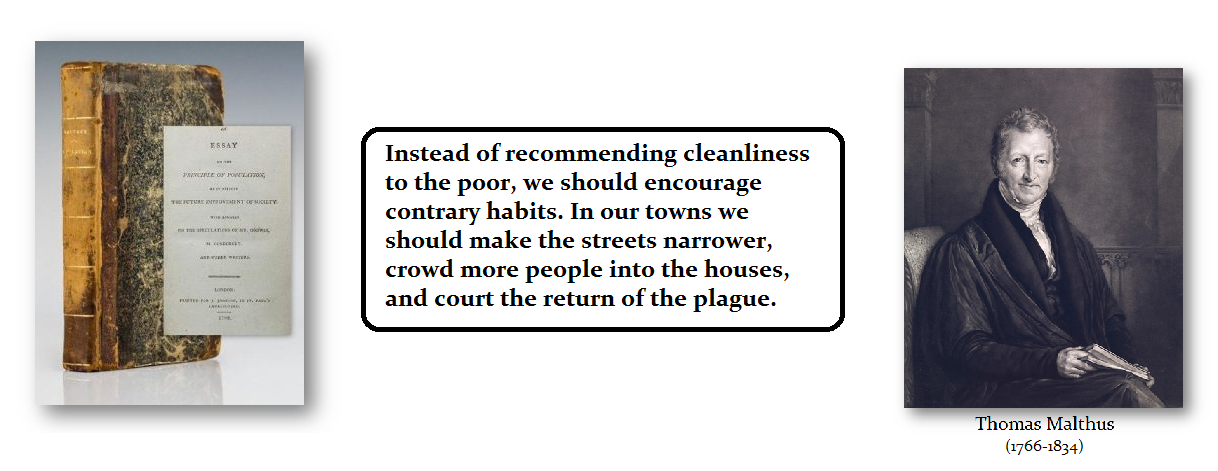
No comments:
Post a Comment